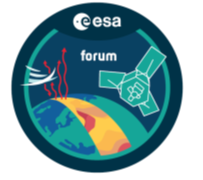Mission Summary

The Far-infrared Outgoing Radiation Understanding and Monitoring (FORUM) mission is ESA’s 9th Earth Explorer, designed to measure, for the first time, the Earth’s outgoing longwave radiation across the entire far-infrared with high spectral resolution and accuracy. The mission goal is to use these measurements to understand and constrain the processes that control far-infrared radiative transfer and hence the Earth’s Greenhouse Effect and critical climate feedbacks. The observations will also be used to retrieve mid-upper tropospheric water vapour, ice cloud amount and properties and, where possible, far-infrared surface emissivity.
The FORUM payload consists of two instruments flying on the same polar orbiting satellite. The FORUM sounding instrument (FSI) will resolve the outgoing spectrum from 6.25-100 microns with high radiometric accuracy, integrated over a 15 km diameter footprint at the Earth’s surface. The FORUM embedded imager (FEI) will measure in just one wavelength channel but at much higher spatial resolution to identify features contained within the FSI footprint. Flying FORUM in loose formation with the MetOp-SG satellite carrying IASI-NG, a mid-infrared instrument covering the spectral range 3.6-15.5 microns, will facilitate the first ever measurements of the complete outgoing longwave spectrum of the Earth.
Facts
- Provisional Launch Date: 2027
- Orbit: Sun-synchronous polar
- Mission Duration: 5 years
- Science Lead: Prof. Helen Brindley, NCEO, Imperial College London
- Funding Agency: ESA
External Links
ESA Site: ESA - FORUM
UKSA Blog: How FORUM will improve climate change forecasts - UK Space Agency blog
Key publication
Palchetti L, H. Brindley, R. Bantges, S. Buehler, C. Camy-Peyret, B. Carli, U. Cortesi, S. Del Bianco, G. Di Natale, B. Dinelli, D. Feldman, X. Huang, L. Labonnote, Q. Libois, T. Maestri, M. Mlynczak, J. Murray, H. Oetjen, M. Ridolfi, M. Riese, J. Russell, R. Saunders and C. Serio, 2020. FORUM: unique far-infrared satellite observations to better understand how Earth radiates energy to space, Bull. Amer. Meteorol. Soc., 101, doi:10.1175/bams-d-19-0322.1